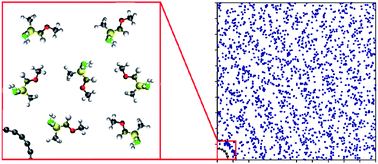Interaction energy and polymer density profile in nanocomposites: a coarse grain simulation based on interaction stress
Abstract
A coarse grain approach was selected to simulate nanocomposites made of

* Corresponding authors
a
Department of Mechanical Engineering, McGill University, Macdonald Engineering Building, Room 367, 817 Sherbrooke St West, Montreal, Quebec, Canada H3A 2K6
E-mail:
meysam.rahmat@mcgill.ca, hossein.ghiasi@mcgill.ca, pascal.hubert@mcgill.ca
Fax: +(514) 398-7365
Tel: +(514) 398-6303
A coarse grain approach was selected to simulate nanocomposites made of

 Please wait while we load your content...
Something went wrong. Try again?
Please wait while we load your content...
Something went wrong. Try again?
M. Rahmat, H. Ghiasi and P. Hubert, Polym. Chem., 2012, 3, 1158 DOI: 10.1039/C2PY00532H
To request permission to reproduce material from this article, please go to the Copyright Clearance Center request page.
If you are an author contributing to an RSC publication, you do not need to request permission provided correct acknowledgement is given.
If you are the author of this article, you do not need to request permission to reproduce figures and diagrams provided correct acknowledgement is given. If you want to reproduce the whole article in a third-party publication (excluding your thesis/dissertation for which permission is not required) please go to the Copyright Clearance Center request page.
Read more about how to correctly acknowledge RSC content.
 Fetching data from CrossRef.
Fetching data from CrossRef.
This may take some time to load.
Loading related content
